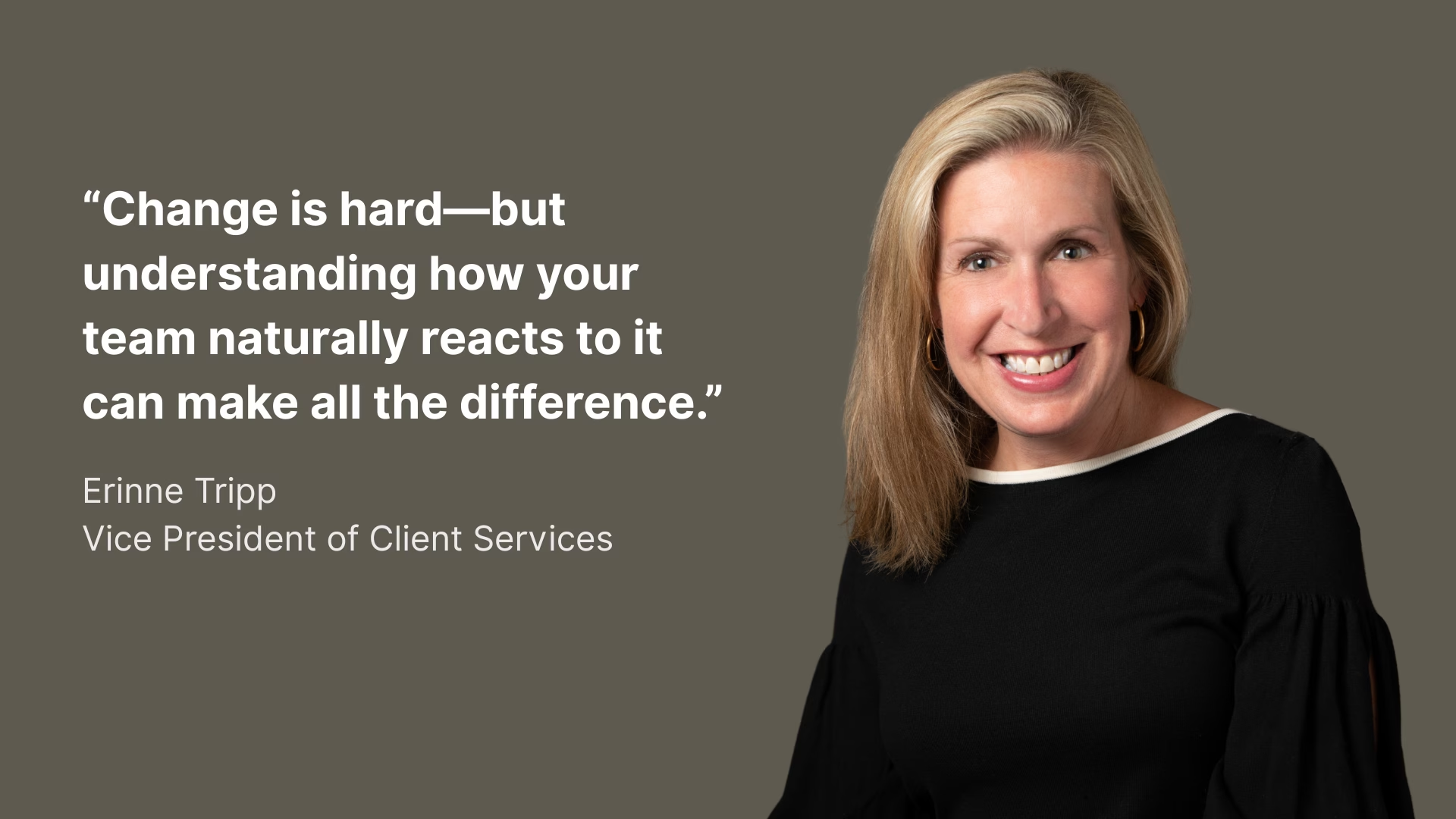
As a longtime user and advocate of the Predictive Index (PI) and organizational change, I’ve observed a consistent truth: successful change isn’t just about implementing new processes or systems—it’s fundamentally about understanding and guiding human behavior. Through my work helping organizations navigate transformations, I’ve gained some insights about what truly drives successful change initiatives.
The Power of Behavioral Intelligence in Change Management
One of the biggest revelations from my consulting experience has been how behavioral assessment tools like PI can transform our approach to change management. By understanding the natural behavioral drives of team members, leaders can better anticipate reactions to change and tailor their approach accordingly.
Let me share a recent example: I worked with a financial institution undergoing a large-scale reorganization following a merger. Using PI assessments, we identified that certain teams contained a high concentration of individuals with stabilizing, process-oriented behavioral profiles—people who valued consistency and clarity. The leadership team, however, was predominantly composed of individuals with a high drive for innovation and rapid execution. Recognizing this dynamic, we adjusted our change management strategy. Rather than pushing immediate restructuring, we provided these teams with clear, step-by-step implementation plans, regular check-ins, and detailed explanations of ‘how’ the changes would unfold. This approach reduced anxiety, increased engagement, and ultimately facilitated a much smoother transition.
Three Critical Elements for Successful Change
Through numerous engagements, I’ve identified three things that consistently appear in successful change initiatives:
- Behavioral Alignment
The most successful changes I’ve facilitated start with understanding the behavioral profiles of both leaders and team members. When we align change strategies with natural behavioral tendencies, we see notably higher engagement and less resistance. For instance, when working with teams that have high dominance factors in their PI profiles, involving them in decision-making processes proves far more effective than top-down directives. - Customized Communication
I feel like a broken record, but I have to say it—one size does NOT fit all when it comes to change communication. I’ve seen organizations completely transform for the better by tailoring their communication approaches based on behavioral data. Teams with high formality drives need detailed documentation and clear processes, while those with high extraversion respond better to collaborative discussions and interactive sessions. - Leader-Team Fit
The relationship between a leader’s behavioral profile and their team’s composition can make or break a change initiative. I’ve guided organizations in using PI data to identify potential gaps between leadership styles and team needs during change, allowing for proactive adjustments in approach.
Real-World Impact
Let me share another customer example: A healthcare center was restructuring its workforce and needed to reassign employees to new roles. Leadership initially approached this transition with a blanket strategy, assuming employees would quickly adapt to their new positions. However, PI assessments revealed that certain employees had behavioral profiles indicating a lower tolerance for change and uncertainty. Rather than forcing rapid transitions, we leveraged PI insights to identify roles that better aligned with employees’ natural tendencies, ensuring a smoother integration. Additionally, managers tailored their communication styles—providing clear, structured guidance for those who needed it while giving more autonomy to those who thrived in fluid environments. As a result, employee morale remained high, turnover was minimized, and the company successfully completed its workforce transformation.
Looking Forward: The Evolution of Change Management
As organizations continue to face unprecedented rates of change, the ability to understand and work with human behavioral patterns becomes increasingly crucial. In my practice, I’m seeing a clear shift toward more personalized, behaviorally intelligent approaches to change management.








